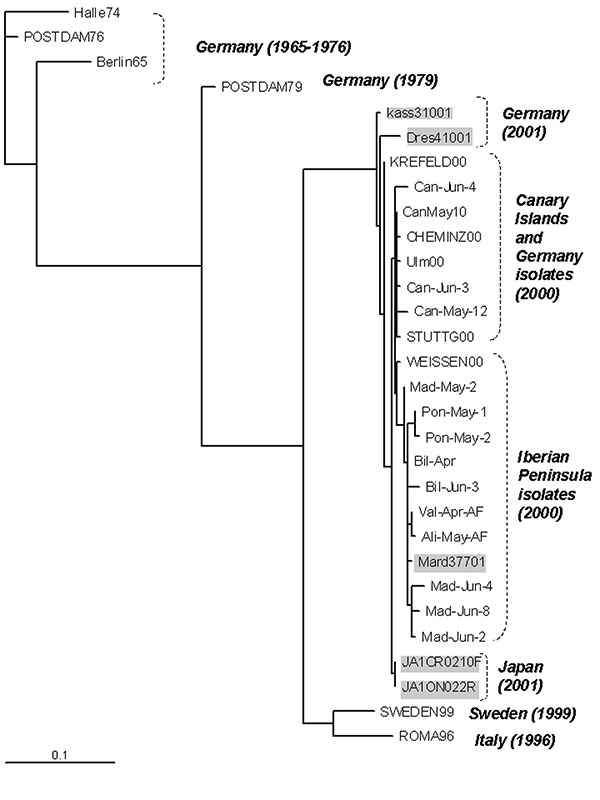Volume 9, Number 8—August 2003
Research
Molecular Analysis of Echovirus 13 Isolates and Aseptic Meningitis, Spain
Figure 4

Figure 4. Phylogenetic tree of the 5′ VP1 extreme showing the relationship between the Spanish isolates and others. The sequences included are the 14 Spanish echovirus 13 selected isolates as well as the German (n=12), Italian (n=1), Swedish (n=1), and Japanese (n=2) ones. Phylogenetic tree reconstructed with the maximum-likelihood method, 50 Jumble. Gray sequences correspond to the 2001 isolates.
Page created: December 22, 2010
Page updated: December 22, 2010
Page reviewed: December 22, 2010
The conclusions, findings, and opinions expressed by authors contributing to this journal do not necessarily reflect the official position of the U.S. Department of Health and Human Services, the Public Health Service, the Centers for Disease Control and Prevention, or the authors' affiliated institutions. Use of trade names is for identification only and does not imply endorsement by any of the groups named above.